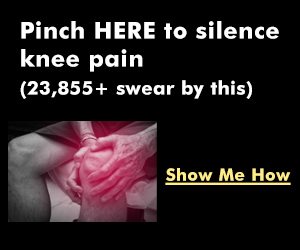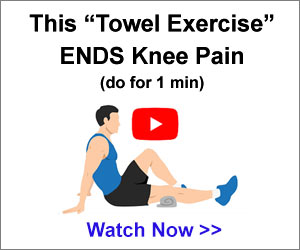>JANICE KEIZER: Now, to begin our presentation on helping educators support early childhood education, I would like to introduce my colleague, Dr. Katie Dahlke. >>KATIE DAHLKE: Good afternoon, everyone. Today, we wanted to highlight two important ways that preK and kindergarten teachers can support families in their efforts to promote children’s early learning and development at home, particularly during this time of school closures. First, we’ll briefly review the research on the importance of teacher-child relationships for children’s development, and then share some ways that teachers are addressing this core component of quality early childhood education.
Another important consideration for supporting learning at home is providing families with early learning resources and guidance. There is a lot of information out there, and it can be difficult to identify what is appropriate for meeting the needs of your families, so REL Southwest compiled a searchable database of instructional resources that we will be introducing today. There is a body of empirical evidence that demonstrates the importance of healthy adult-child relationships. Studies show that stable and positive adult-child relationships–these are those that are characterized by warmth and responsiveness–are important for children’s healthy development.
Children who have positive relationships with their teachers tend to demonstrate greater academic performance, better social skills, and less negative behavior.

It’s through these relationships that caregivers help children learn to regulate emotions and behaviors, and this is especially true when there is a secure attachment bond between the child and their caregiver or teacher. These empirical findings follow various theories of child development including Bowlby’s attachment theory. The attachment theory identified that stable and sensitive interactions between adult caregivers and children create attachment bonds which allow children to feel less anxious, and to help them explore and learn in their surrounding environment.
In addition, bioecological systems theory holds that quality and supportive environments which include these positive, responsive adult-child relationships, these are critical for helping children reach their individual potential. This is especially true for vulnerable children.
Not only does the quality of the environment or that relationship influence the child, but so too does the child influence their environment, and the effect of this dynamic builds over time. So children may arrive with a unique set of needs and behaviors from having repeated stressors in their early years, and these behaviors may influence the educator’s interactions with that child and with that class, overall, which in turn affects that child.
So for more vulnerable children who may be more likely to have a difficult time in school, positive teacher-child relationships can be a mitigating factor or a buffer to interrupt the current potentially negative trajectories. How do we support positive adult-child relationships during school closures? The importance of healthy supportive adult-child relationships remains true as schools and families have transitioned to remote instruction.
Teachers are finding ways to stay connected to their students including using technology to support those connections and relationships. We know that teachers are sending videos of themselves, reading books aloud, they’re requesting videos and pictures in return from their students and the families.
Teachers are convening video conference calls with their classes, or engaging in one-on-one conversations with their students via Facetime or telephone to hear what students are doing and thinking about, but importantly, not all students have access to internet and devices, and those that do might have to share those devices with other members of their families. As such, outreach to families by sending personalized notes or letters to children’s homes is another option that teachers are using for facilitating that connection and maintaining those relationships. I’m sure as we get into the panelist discussion, we’ll hear many other ideas of strategies that teachers are using to maintain those relationships.
Teachers are also finding ways to help parents engage with their children in learning opportunities to support positive parent-child relationships during this time. Children who engage with caring adults in their household through play and other interactive learning activities including reading together can develop that secure relationship with the parent too. We know that there are multiple demands on children’s caregivers right now including balancing working from home, or navigating new financial and employment challenges, all at the same time as caring for children and supporting their developmental and learning needs.
And we know there are numerous resources available to support parents, but it can become overwhelming for caregivers and for educators to identify good resources that meet their children’s needs in specific areas. It’s really hard to discern which resources to use, how often to use them, and how to fit this into a regular routine for the child and for the family.
So, in response to requests from our state partners, REL Southwest has compiled a database that includes two searchable spreadsheets of resources that can support children’s learning and development at home. The database can be used by educators to select resources to share with their students’ families, and it can also be used by primary caregivers who want to identify for themselves, age-appropriate learning activities for their children, even as we move into the summer months when school is not in session. Resources included in these spreadsheets are specifically designed for prekindergarten and kindergarten aged children although some of these resources span multiple age or grade levels, so they’re appropriate for other age groups as well, and that is specified.
The database has two searchable spreadsheets. The first includes free resources including both online and offline activities and guidance to support children’s learning and development at home.
These resources are not reviewed by the What Works Clearinghouse or do not have studies that have been reviewed by the What Works Clearinghouse. The second, however, the second spreadsheet includes resources that have been studied, and those studies have been reviewed by the What Works Clearinghouse.

Particularly, it includes online and computer-based resources connected to existing research that meets the evidence standards of What Works Clearinghouse, and has positive or potentially positive effects based on What Works Clearinghouse reviews. The free resources were identified through a search of teacher and education association websites as well as through keyword searches. The resources were included if they targeted prekindergarten and kindergarten students, if they had activities or guidance to support learning in an at-home learning environment, and if they were free of charge and did not have advertisements or promotional pop-ups.
The spreadsheet will provide information about these resources including the name, description, developer, what type of resource it is, whether it has a principal activity, its availability in languages other than English, what grade levels it is appropriate for, what student subgroups it might be designed for, as well as content areas that are covered. You can search for instructional resources designed to address specific student subgroups and specific content areas by clicking on the small upside-down arrow in a particular column to filter the list. You can do this for more than one topic at the same time. For instance, if you wanted to find resources that address both social and emotional learning, and reading, you can use that dropdown arrow on both columns.
You can also look for guidance resources related to specific topics including guidance around COVID-19, and children home learning guidance, technology guidance, and virtual learning guidance.
The second spreadsheet describes online and computer-based resources connected to existing research that meet the evidence standards of What Works Clearinghouse. Not all of these resources in the second spreadsheet are free. The spreadsheet provides the resource name again, a brief description, and the publisher, and again, has these searchable fields so you can sort by grade levels, the grade level studied in those What Works Clearinghouse reviewed studies sorting by student subgroups, content areas, and it also provides the information about those studies, and a link to the What Works Clearinghouse intervention report. The list includes only seven resources that meet our criteria, but you can still filter that list to narrow it down based on particular fields in the same way as the other spreadsheet..
(PLR) Make Money with PLR Blueprint https://warriorplus.com/o2/a/kdl6vm7/0
(PLR) Make Money Freelancing with ChatGPT https://warriorplus.com/o2/a/lm9zt07/0
Discover more from Marketing Revolution
Subscribe to get the latest posts sent to your email.




























